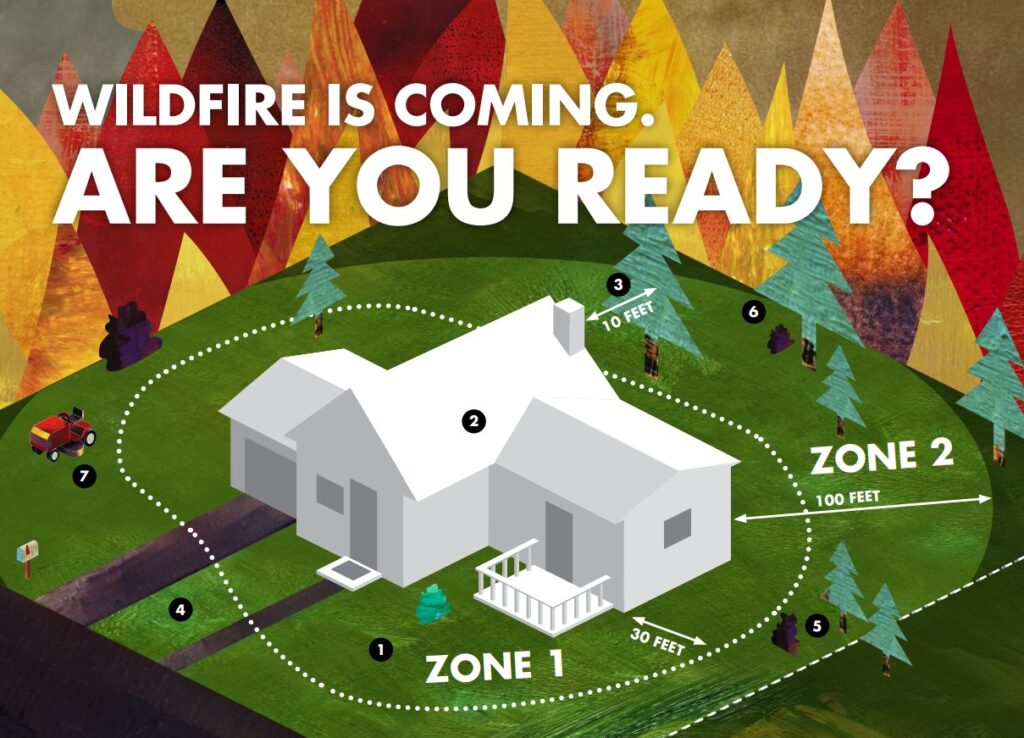Defensible Space is the area around a building where you should focus on reducing vegetation and other debris to slow the spread of wildfire towards the building.
The defensible space is divided into three zones: Zone 0, Zone 1, and Zone 2.

Zone 0
This zone is the ember-resistant zone that extends 5 feet from buildings, structures, decks, etc. This zone includes the area under and around all attached decks and requires the most stringent wildfire fuel reduction. The ember-resistant zone is designed to keep fire or embers from igniting materials that can spread the fire to your home.
The following provides guidance for this zone: use hardscape like gravel, pavers, concrete, and other noncombustible mulch materials; remove all dead and dying weeds, grass, plants, shrubs, trees, branches and vegetative debris (leaves, needles, cones, bark, etc.); check your roofs, gutters, decks, porches, stairways, etc.; remove all branches within 10 feet of any chimney or stovepipe outlet; limit combustible items (outdoor furniture, planters, etc.) on top of decks; relocate firewood and lumber to Zone 2; replace combustible fencing, gates, and arbors attach to the home with noncombustible alternatives; consider relocating garbage and recycling containers outside this zone; consider relocating boats, RVs, vehicles and other combustible items outside this zone.
Zone 1
This area extends 30 feet from buildings, structures, decks, etc. or to your property line whichever is closer. This zone is called the Lean Clean and Green Zone. In this zone remove all dead plants, grass and weeds (vegetation). Remove dead or dry leaves and pine needles from your yard. And remember to remove branches that hang over your roof and keep dead branches 10 feet away from your chimney.
Zone 2
After Zone 1 this zone extends out to 100 feet from buildings or to your property line whichever is closer.
In this zone create horizontal and vertical spacing between plants. The amount of space needed depends on how steep your property is and the size of the plants. For example large trees need more space than small trees. If you’re not sure how much space to provide consider hiring a professional landscape designer or arborist.
By implementing these zones you can reduce the risk of wildfire damage to your home.
If this all seems a little complicated, Give Us a Call and we will stop by consult on ways you can harden your home to Wildfire Risk!

